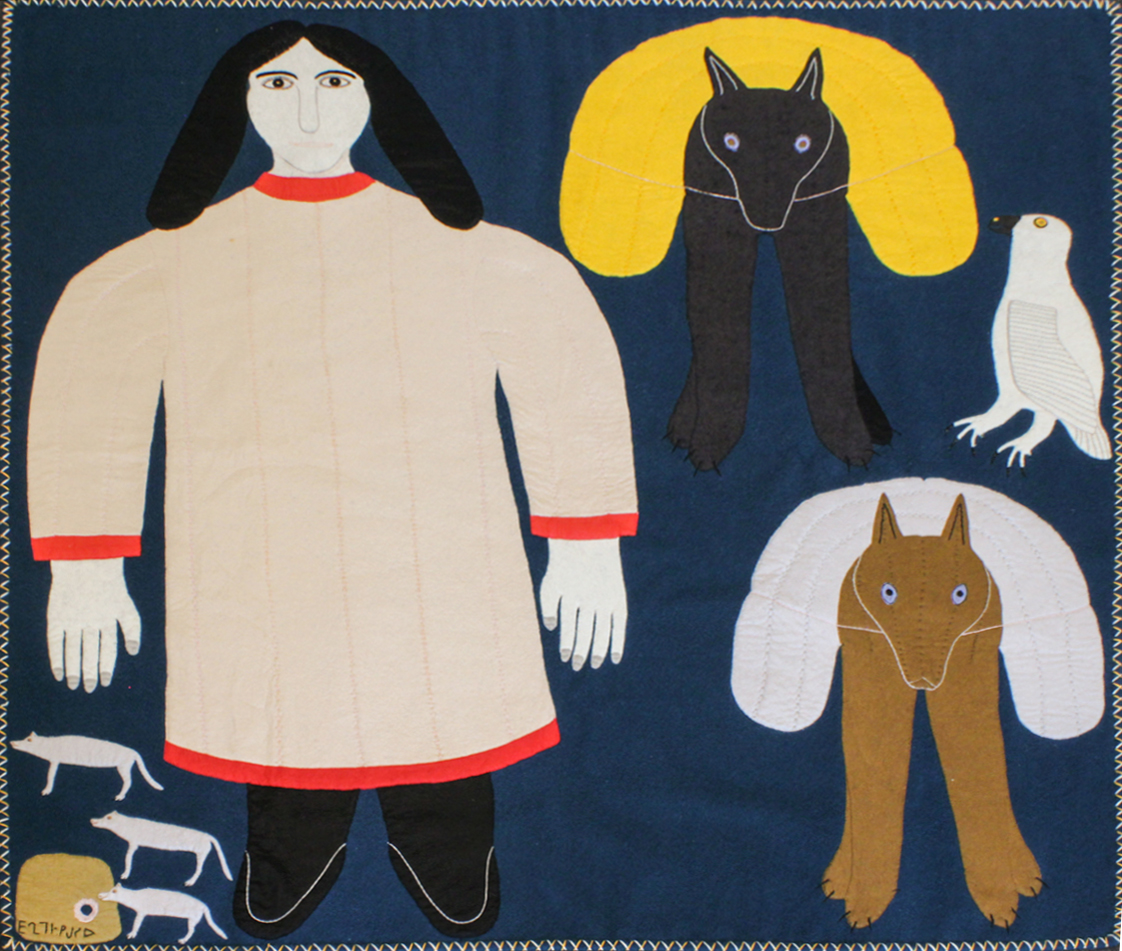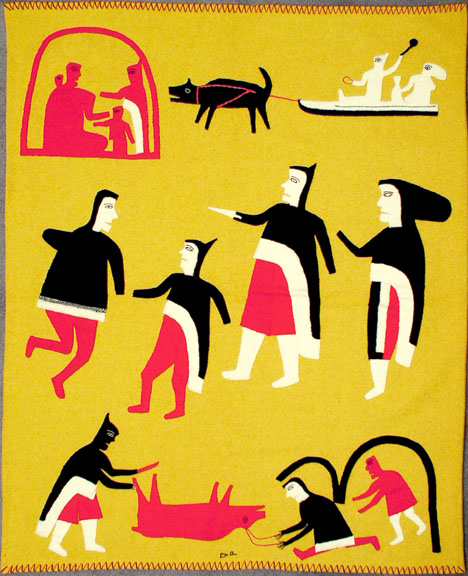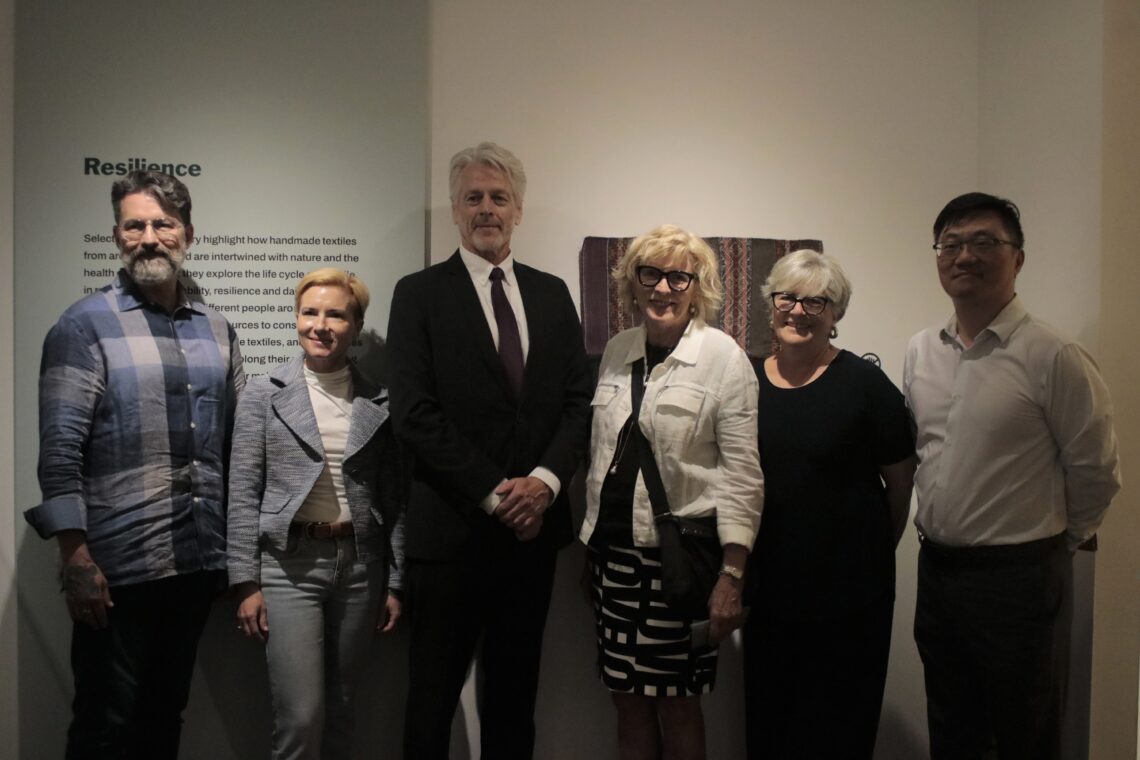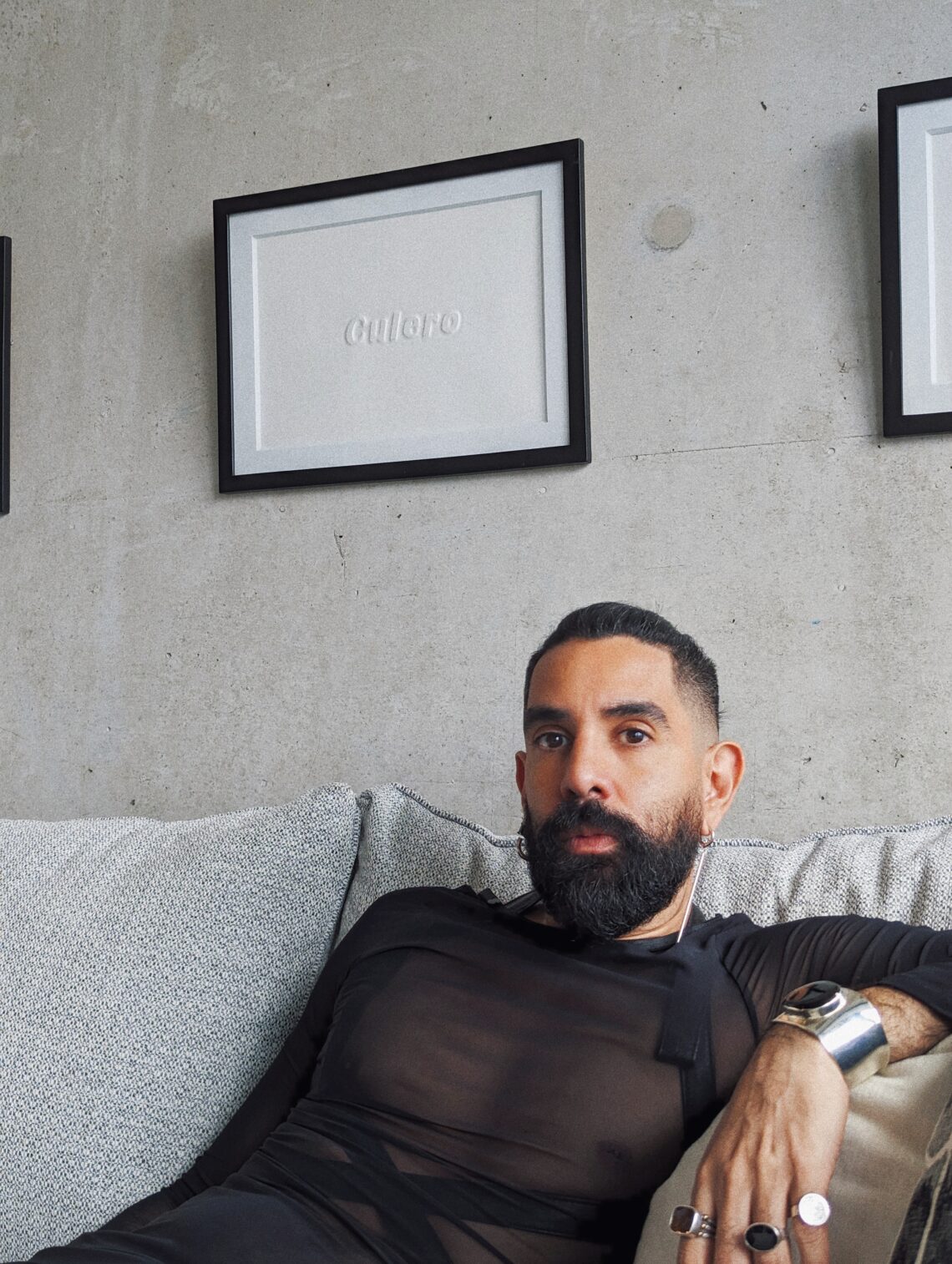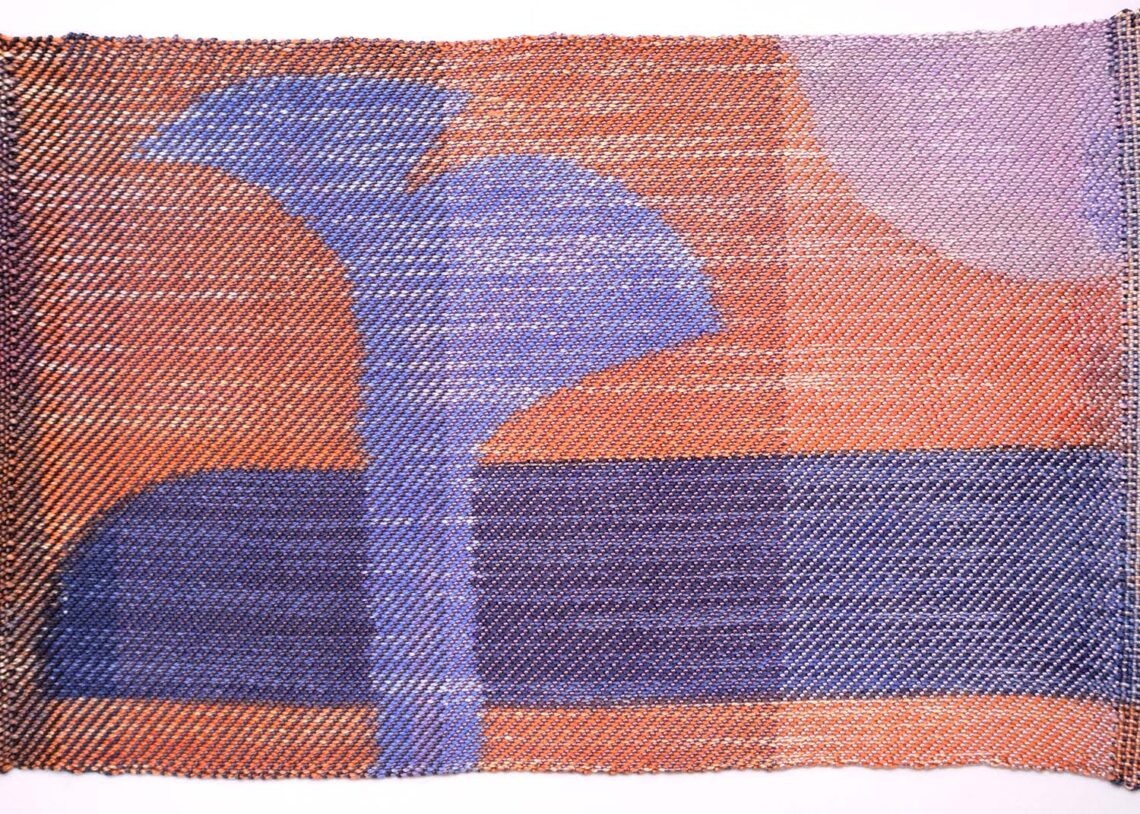Double Vision: Jessie Oonark, Janet Kigusiuq, and Victoria Mamnguqsualuk
The Textile Museum of Canada and Toronto Biennial of Art present the exhibition
Double Vision: Jessie Oonark, Janet Kigusiuq, and Victoria Mamnguqsualuk
February 16 to August 14, 2022
The Textile Museum of Canada (the Museum) and Toronto Biennial of Art (TBA) announce their partnership in the presentation and tour of the exhibition Double Vision: Jessie Oonark, Janet Kigusiuq, and Victoria Mamnguqsualuk. Curated by Candice Hopkins, Senior Curator at the Toronto Biennial of Art, the exhibition will be on view at the Textile Museum February 16 – August 14, 2022.
Double Vision will debut at the Museum as a key component of the 2022 Toronto Biennial of Art (March 26 – June 5, 2022). The Museum will partner with TBA to provide free and accessible arts programming across Toronto and surrounding areas during the presentation.
“We are thrilled to launch our 2022 programming with such a significant partnership,” said Emma Quin, the Textile Museum’s Director and CEO. Double Vision builds on years of Museum exhibitions and partnerships that have focussed on textiles that reveal deep Indigenous histories while sharing stories of the people who continue to shape textile practices today.”
Double Vision profiles three ground-breaking artists from Nunavut—Jessie Oonark (1906 – 1985) and her daughters, Janet Kigusiuq (1926 – 2005) and Victoria Mamnguqsualuk (1930 – 2016)—and shines a light on a highly distinctive art form called nivinngajuliaat that developed out of government-sponsored craft programs in the Arctic, beginning with the sewing program in Qamani`tuaq (Baker Lake) established in the 1960s.
Nivinngajuliaat, or wall hangings, were conceived by the seamstresses of the community. These brightly stitched textiles feature graphic appliquéd images, often enhanced with embroidery, centering on the dynamics and interrelationships between people and animals. Through these artworks, Double Vision looks at the matriarchal practice of Oonark and two of her daughters, and how women artists in Qamani`tuaq mentored one another in producing unique aesthetic and conceptual lineages. The exhibition brings together artworks from public and private collections from across Canada and features remarkable examples of nivinngajuliaat alongside seldom seen drawings by Oonark and Mamnguqsualuk and paper collages by Kigusiuq that relate to both the technique and content of the wall hangings.
“Jessie Oonark has had a profound influence on Inuit textiles although she only began drawing and working with wool after moving to Qamani’tuaq at the age of 59,” said Hopkins. “Her practice is characterized by its symmetry—which has been described as a kind of ‘double vision’. Together, the works of Oonark, Kigusiaq, and Mamnguqsualuk represent a matriarchal practice, one that is explored through the making of nivinngajuliaat, and how this practice and their kinship informed their collages, prints, and drawings.”
The exhibition and public programming will foreground Inuit knowledge and encourage cultural exchange through artistic, educational, and museum training activities, including a curatorial assistant placement for an Inuk student supported by the Museum’s Institutional Partner, the Inuit Futures in Arts Leadership: The Pilimmaksarniq/Pijariuqsarniq Project. Artists who actively create nivinngajuliaat today and community members from Qamani`tuaq will be engaged in workshops, consultation, and digital programs. The Museum will partner with TBA in activities to take place in indoor and outdoor venues using digital and online platforms, engagement tools, learning resources, and other programs and events. Double Vision will extend the TBA’s and the Museum’s commitment to working with Indigenous artists, curators, and communities locally and nationally.
Double Vision is supported by the Museums Assistance Program of the Department of Canadian Heritage, and funded by The Goring Family Foundation and Christopher Bredt & Jamie Cameron.
